
Oundle School is a public school for pupils 11–18 situated in the market town of Oundle in Northamptonshire, England. The school has been governed by the Worshipful Company of Grocers of the City of London since its foundation by Sir William Laxton in 1556. The school's alumni – known as Old Oundelians – include renowned entrepreneurs, scientists, politicians, military figures and sportspeople.
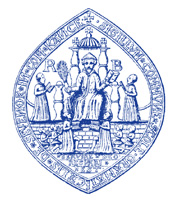
Sevenoaks School is a selective coeducational English public school, with provision for day attendees in Sevenoaks, Kent, England. It is the second oldest non-denominational school in the United Kingdom, dating back to 1432, only behind Oswestry (1407). Around 1,200 day pupils and boarders attend, ranging in age from 11 to 18 years. There are approximately equal numbers of boys and girls. In 2006 it became the first major UK school to switch entirely from A level exams to the International Baccalaureate.

Wayne is an unincorporated community centered in Delaware County, Pennsylvania, United States, on the Main Line, a series of highly affluent Philadelphia suburbs located along the railroad tracks of the Pennsylvania Railroad and one of the wealthiest areas in the nation. While the center of Wayne is in Radnor Township, Wayne extends into both Tredyffrin Township in Chester County and Upper Merion Township in Montgomery County. The center of Wayne was designated the Downtown Wayne Historic District in 2012. Considering the large area served by the Wayne post office, the community may extend slightly into Easttown Township, Chester County, as well.

Windermere School is a independent co-educational boarding and day school in the English Lake District. Founded in 1863, it has approximately 360 pupils between the ages of 3 and 18, around a third of whom are boarders. The School is split across three campuses on over fifty acres of land: the junior school at Elleray; the senior school and sixth form at Browhead; and Hodge Howe, the school's Royal Yachting Association watersports centre on the shores of Lake Windermere.

Wisbech Grammar School is an 11–18 co-educational, Church of England, private day school and sixth form in Wisbech, Isle of Ely, Cambridgeshire, England. Founded by the Guild of the Holy Trinity in 1379, it is one of the oldest schools in the country.

Sundridge is a village within the civil parish of Sundridge with Ide Hill, in the Sevenoaks district of Kent, England. The village is located on the A25 road to the east of Westerham. It lies within the Kent Downs Area of Outstanding Natural Beauty and within London’s Metropolitan Green Belt. It is approximately 21 miles south of London. Its church is Anglican and dedicated to St Mary.
The New Beacon Preparatory School is an independent all-boys preparatory school, located at Sevenoaks in the English county of Kent. It admits both day students and boarders aged between 4 and 13. The school also now offers a co-educational nursery for children 3 years of age and over. The school was founded in 1863, and has been on the current site since 1900. It had 62 students in 1913, and had grown to 400 students by 2008.
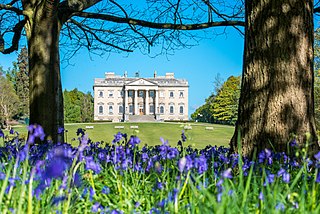
Claremont Fan Court School is a co-educational private day school for pupils from 2 to 18 years. Situated outside Esher, in Surrey, sixteen miles from London, it is located on the grounds of the Claremont Estate. It is a member of the Society of Heads, the Independent Schools Council (ISC) and the Independent Association of Prep Schools (IAPS).

Walthamstow Hall is a private day school for girls in the centre of Sevenoaks, Kent, England. It was founded by Dorothea Foulger as a school for the daughters of missionaries in 1838.
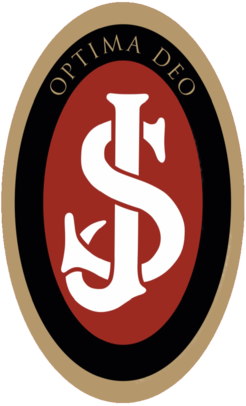
St Joseph's College is a coeducational private day school in Reading, Berkshire, England. In September 2010, it changed its name to St Joseph's College to reflect the move into co-education from being a girls' school. The junior section is known as St Joseph's College Prep School. It was a member of the Girls' Schools Association until the move into coeducation. The College is now a member of the Society of Heads, Independent Schools Council and Catholic Independent Schools’ Council. It won the TES Independent School of the Year award in November 2015.
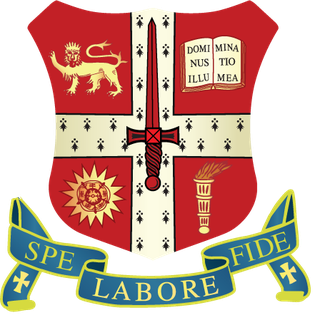
Central Foundation Boys' School is a voluntary-aided comprehensive secondary school in the London Borough of Islington. It was founded at a meeting in 1865 and opened the following year in Bath Street, before moving to its current location on Cowper Street in 1869. Originally named The Middle Class School of London, it was renamed in 1890 after the establishment of its trust body, the Central Foundation Schools Trust. Its sister school is Central Foundation Girls' School in Tower Hamlets. Both schools are beneficiaries of the charity Central Foundation Schools of London, which in turn is a beneficiary of The Dulwich Estate, successor to the historic College of God's Gift charity.
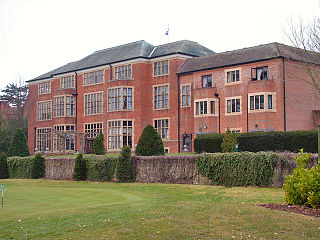
Hanbury Manor, centred on the multi-wing Hanbury Manor Hotel, is a converted late-Victorian country house and adjoining golf course in Thundridge, north of Ware, Hertfordshire, some 10 miles (16 km) north of Greater London. It is part of a leisure retreat and country club owned by Marriott Hotels. The house is Grade II* listed on the National Heritage List for England.

Trinity School is a non-selective, co-educational, day and boarding school in Teignmouth, Devon for children aged 3–19. The school was founded in 1979 as a joint Roman Catholic and Anglican school. Today the school consists of a Nursery, Preparatory Department, Senior Department and Sixth Form, and welcomes day pupils from the surrounding areas as well as boarders from further afield in the UK and all over the world. Its facilities include a heated outdoor swimming pool, sports pitches, and an onsite tennis academy.
St Catherine's School is an independent, co-educational school in Germiston, Gauteng named after Saint Catherine of Siena. A combined school, St Catherine's consists of a pre-school, a preparatory school and a senior school and is the oldest school in Germiston.
Evelyn Hellicar (1862–1929) was an English architect.
Ernest Newton was an English architect, President of Royal Institute of British Architects and founding member of the Art Workers' Guild.

Karl Bergemann Parsons was a British stained glass artist associated with the Arts and Crafts movement.
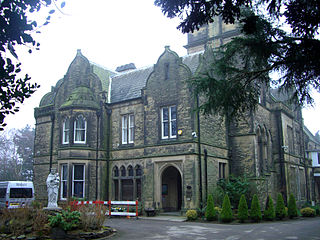
Mylnhurst is a small English country house on Button Hill in the Ecclesall area of Sheffield, England. The house was previously a private residence, it now serves as a private school. The house along with the attached stables and lodge are Grade II listed buildings.
Scoil Mhuire, Buncrana is a co-educational voluntary Catholic secondary school, located in Buncrana in County Donegal, Ireland. The school was founded by the Sisters of Mercy in 1933 and continues to have a Catholic ethos under the trusteeship of the Catholic Education an Irish Schools Trust (CEIST). It had 788 students in 2021.
Doris Morley Cosens, often referred to as Dora Cosens, was a British architect, particularly known for her Modernist house, 9 Wilberforce Road in Cambridge. Along with Mary Crowley and Elisabeth Scott, she was among the earliest women architects to work in Britain during the modern era.















